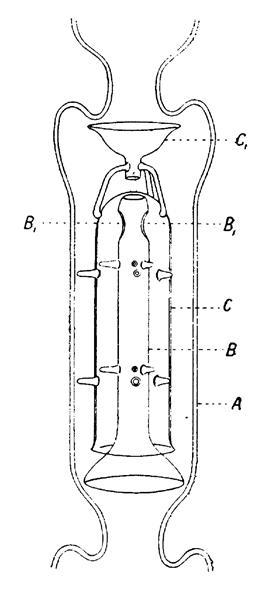I recently gave a talk at an event Salters Hall in central London. Over the buffet lunch, I fell into conversation with a senior researcher from a global chemical company, an organic chemist. Reminiscing about vanished practices, I asked him whether he remembered anyone ever making hooch in the lab. He recalled that a student in another lab had done this. Was he being coy, I wondered?

It was once not uncommon for researchers to make batches of festive alcohol. The preps involved steeping fruit in alcohol and adding spices, before final distillation. The glassware was always kept strictly separate to avoid contamination, and all the recipes began with the instruction to start from either 96% or spectroscopic grade alcohol, but never absolute. The reason is down to a discovery made in Bristol just as distillation was being transformed into a proper science.
The scientist in question was Sydney Young, born near Widnes in Lancashire. His well-off parents sent him to the Royal Institution School, almost the only secondary school in Liverpool that gave an education to ‘the sons of respectable persons’. Young would go on to Owens College in Manchester where he studied with Henry Roscoe and Carl Schorlemmer who were specialists in inorganic and organic chemistry respectively.
In 1881 he spent a term in Strassburg in the lab of the organic chemist Rudolf Fittig – where he became a skilled glassblower – and on returning to Britain studied in Bristol with one of Fittig’s former students, the Scottish chemist William Ramsay. Young turned decisively towards physical chemistry, setting out to put thermodynamics to the test. With Ramsay, Young showed that ammonia could be decomposed over iron filings, and that the reaction was an equilibrium, an observation that proved a key milestone in the development of the Haber process.
He then turned to the problem of sublimation. The Clausius–Clapeyron relation linked the temperature and the vapour pressure of liquids and neatly explained why they had ‘boiling points’, but did the same apply to sublimation? Starting with ice, Young showed that there was fairly clear relation between the temperature of ice deposited on a thermometer in vacuum, and an applied pressure. Organic compounds like benzene and camphor fitted the pattern too, helping to draw lines on pressure–temperature phase diagrams. Over the following decade Young and Ramsay would map out the thermodynamics of numerous systems exploring vapour pressures, critical phenomena, and studying the effect of chemical dissociation.
When Ramsay left Bristol in 1887 to succeed Alexander Williamson at University College, London, Young took his place. By then the two had become firm friends and they continued to publish together until the 1890s when Ramsay discovered the noble gases.

Young’s interest in thermodynamics meant that he needed very pure starting materials. For liquids, distillation was the only game in town, but the various designs of distillation glassware all had limitations. Wurtz’s bulbs were only moderately efficient while the bubbling ‘dephlegmators’ with platinum gauzes like Linnemann’s baskets, and Lebel–Henninger’s fractionator held up too much liquid, causing wastage. With a student, G Thomas, he developed a fractionating column in which a series of indentations in the long tube (prefiguring Vigreux’s later design) held gauzes each pierced by a U-tube to allow most of the liquid to drain down the centre of the tube.
To reduce the hold-up further, Young devised a rod with several flat disks along its length that stood on a tripod of prongs, and which could be inserted into a normal still head. The results were markedly better, and this led him to a further improvement: an ‘evaporator’ still head, where the liquid was forced to follow alternating upward and downward paths through a series of central tubes capped by inverted test-tubes, oddly reminiscent of a multistage diffusion pump. Curiously, Young never mentions surface area in any of his papers, which was the key to the operation of these columns. A beautiful set of them is on display at Trinity College Dublin where Young would end his career.
As he developed these stills, Young worked on the distillation of various mixtures with Emily Fortey, a chemist who would later push for the Chemical Society to admit women. The pair found that adding benzene to wet alcohol led to a three-component azeotrope that could be distilled away to leave absolute ethanol, though traces of benzene remained that were hard to eliminate. For decades this was the principal industrial process for producing absolute ethanol, until molecular sieves provided an alternative, and was the reason for that substance’s proscription from those lab hooch recipes.
Making moonshine in the lab is unthinkable today. But in the archives at UCL, William Ramsay’s dinner book includes an entry for an evening in November 1889 when Ramsay hosted Dimitrii Mendeleev. Among the guests was Sydney Young. I’m sure that there were a series of toasts proposed at the end of the dinner. What were they drinking? Was it Scotch? Vodka? Or was it some Ramsay and Young homebrew?
Acknowledgments
Several friends recalled hooch recipes and procedures. Ben Power sent me photographs from Dublin.
References
S Young, J. Chem. Soc. Trans., 1899, 75, 679 (DOI: 10.1039/CT8997500679)

















No comments yet